The alleged purpose of the United Nation’s (UN’s) Sustainable Development Goal 7 (SDG7) is to “ensure access to affordable, reliable, sustainable and modern energy for all.” In keeping with Agenda 2030, the target date to achieve this goal is, as you might expect, 2030.
As previously discussed, UN documents are couched in fluffy rhetoric. The disarming verisimilitude of compassion and concerned stewardship is thickly layered in UN texts, resolutions and announcements. This obscures the unpalatable aspects of “sustainable development.” We must look beyond what has been said to what is being done if we are to understand the strategic thinking that lies beneath the announced agendas.
The UN Department of Social and Economic Affairs (UNDESA) undertook a consultation to provide a summary report for its 2021 High-Level Dialogue on Energy. The report clearly identified the most significant obstacles to be overcome:
Inequality and poverty prevent access to affordable, reliable, and sustainable energy. [. . .] [E]nergy access follows the tangible geographical disparities, with greater infrastructure development being carried out in urban settings rather than rural. [. . .] Stakeholders emphasized that extreme poverty could not be eradicated without ending energy poverty. [. . .] [G]overnments and investors often-times focus on economic viable areas, where they can make huge profit [. . .] creating severe gaps in providing reliable infrastructure to ‘unprofitable’ locations. These disparities are clear on the international horizon, with unattractive economies being excluded from the investment chain of sustainable and reliable energy. [. . .] Research must expand beyond its focus on specific technologies to explore the role of small-scale, decentralized and off-grid renewable energy solutions.
The subsequent UN High Level Dialogue on Energy and their implementing stakeholder partners are under no illusions. They know full well what the problems are. They know, too, where the global efforts they claim to be leading should focus if their loudly declared humanitarian concerns are to have any credibility. UN Secretary-General António Guterres concluded:
[W]e have a double imperative. [. . .] To end energy poverty and to limit climate change. And we have an answer that will fulfil both imperatives. Affordable, renewable and sustainable energy for all.
Inequality of opportunity, endemic poverty and energy poverty are interdependent at both the local and international scale. Resolving these problems is indivisible from any authentic attempt to transition to “sustainable and modern energy.”
Yet, when we look more closely at the UN stakeholder partnership’s efforts to meet SDG7, we find that, far from addressing the problems that restrict access to energy resources, they are actually exacerbating these problems with their so-called sustainable development of energy. For, despite their claims, they make no real commitment to “ensure access to affordable, reliable, sustainable and modern energy for all.”
Affordable Energy?
There is some debate about the precise meaning of “sustainable development.” Many people point to the definition provided in the 1987 Brundtland Report: Our Common Future:
Sustainable development is development that meets the needs of the present without compromising the ability of future generations to meet their own needs. It contains within it two key concepts. The concept of ‘needs,’ in particular the essential needs of the world’s poor, to which overriding priority should be given; and the idea of limitations imposed by the state of technology and social organization on the environment’s ability to meet present and future needs.
Based on that definition, we can say that the alleged purpose of “sustainable development” is to prioritise meeting the current needs of the world’s poorest while ensuring that their future needs aren’t compromised. All forms of global development and policy design—technological, economic, financial, industrial—must be directed towards this end, all the while protecting the environment for both current and future generations.
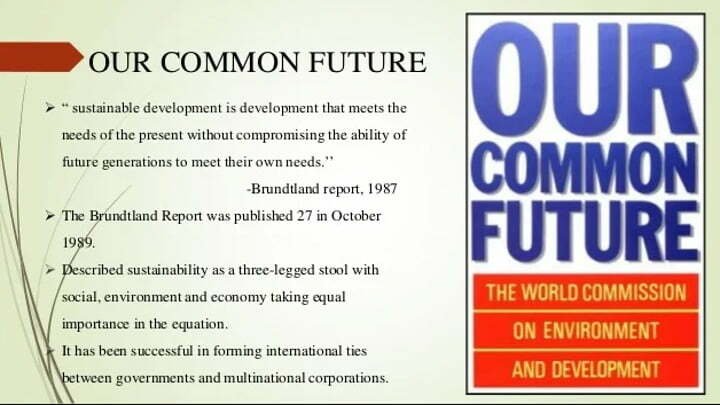
But when we look at the effects of the alleged “sustainable development” policies enacted to date by the global political and corporate class, there is nothing to suggest any determination by our “leaders” to live up to this otherwise worthy aspiration. In short, this concept of “sustainable development” amounts to some nice-sounding words, written in impressive-looking reports, and nothing more.
Thus, as economies around the world face the worrying impact of soaring energy prices, it appears that the UN is a long way from achieving SDG7. That is, if you assume its genuine objective is to ensure access to affordable energy for all. For, as things stand, the vast majority of people in developed nations can ill-afford today’s energy prices. And the prospect of “affordable” energy coming within reach of people in developing nations appears to be extremely remote.
The United States Agency for International Development (USAID) estimates that two out of every three people living in sub-Saharan Africa have no access to electricity. In April 2022, the executive director of the Africa Coalition for Sustainable Energy Access (ACSEA), Dr. Augustine Njamnashi, pointed out that the alleged problem of reliance upon what is called “dirty energy”—the burning of fossil fuels—is secondary to the more pressing problem of energy poverty:
[M]any families do not have access to any form of energy, whether clean or dirty.
It is doubtful, however, that simply introducing a higher proportion of renewable—green—energy into the existing grid infrastructure will do anything to reduce energy poverty. This is especially true in light of the fact that renewable energy has so far appeared to be both more expensive and less reliable than so-called “dirty energy.”
Currently, the poorest half of the world’s population consumes just 20% of the global energy supply. In fact, the poorest half accounts for less energy consumption than the wealthiest 5% of people on earth.
Interestingly, this energy consumption inequality is remarkably consistent. Whether measured in terms of the disparity between rich and poor nations or as the varying levels of energy use within any nation-state, the top 10% consume roughly 20 times more energy than the bottom 10%.
Despite allegations of corruption levelled at government subsidies for fossil fuels, the problem of energy poverty would be considerably worse without them. Nonetheless, as Dr. Njamnashi observed:
The governance around the dirty energy is dirty in itself. If we don’t get the governance right, we can end up with energy from renewable resources whose participation or access and distribution are still laced with a dirty system.
Globally, energy poverty could potentially be alleviated to a degree if the investment were made to construct modern and efficient micro power plants in the currently disconnected regions. A system of local, decentralised power generation would also redistribute economic growth and almost certainly reduce overall poverty and wealth inequality. If the people in these communities had access to the necessary resources, they could create this “sustainable” system of accessible, affordable energy themselves.
If affordable access to “clean energy” for all really is the objective of SDG7, as is claimed, then we should be witnessing significant efforts to decentralise generation and localise energy supplies.
But that is not what’s happening. Instead, investment in energy distribution is predominantly being channelled into the development of the “smart grid.” We are told that the smart grid will be cheaper, more efficient, better able to manage peak demand, and so on.
Even if this were true, it is not clear how introducing smart grid technology into the existing grid distribution network will address energy poverty. Yet the “sustainable development” of energy is a key objective of SDG7.
The International Energy Agency (IEA)—an intergovernmental organisation established in 1974 by the Organisation for Economic Co-operation and Development (OECD)—has this to say about the level of investment needed to attain the SDG7 targets:
Investment in capital-intensive clean power and electricity networks [. . .] would need to more than triple in EMDEs [emerging markets and developing economies] [. . .] and increase more than six times in order to keep the door open for a 1.5 °C stabilisation. [. . .] Enabling universal access to electricity by 2030 requires investment of $35 billion per year, with half of that for decentralised solutions including $13.5 billion in sub-Saharan Africa.
The IEA notes that nearly all investment in ensuring “access to affordable, reliable, sustainable and modern energy” is being made in a handful of developed and rapidly growing economies. Investment in infrastructure projects, electric vehicles, renewable power generation and improved battery storage capacity has mainly been directed toward the US, Europe and, in particular, China:
Renewable investment has thrived in markets with well-established supply chains where lower costs are accompanied by regulatory frameworks that provide cash flow visibility. [. . .] Much of the spending resilience in 2020 was concentrated in a handful of markets, most notably the People’s Republic of China.
The IEA then observes:
In contrast to advanced economies and China, investment in emerging market and developing economies (EMDEs) is set to remain below pre-crisis [Covid-19] levels in 2021 [. . .] EMDEs outside China account for nearly two-thirds of the global population but [. . .] just one-fifth of clean energy investment.
As if the IEA’s assessment isn’t worrisome enough, consumers in developed nations are also being forced to pay higher energy prices in order to accommodate the move toward alleged renewable energy. The people of Germany, for example, have paid an additional surcharge to fund its “energy transition” for years.
This impact of increasing energy prices is felt most acutely by the poorest and the vulnerable, especially retirees. There is no indication that these higher prices will decrease once the “energy transition” is complete.
From a global investment and national policy standpoint, there is no evidence of any intention to “ensure access to affordable, reliable, sustainable and modern energy for all.” Energy poverty is set to continue. “Sustainable development” efforts supposedly intended to reduce energy poverty are not only useless, they are actually worsening it.
Reliable Energy?
Presently, renewable energy is incapable of fully powering either manufacturing or any other “energy-intensive” industry in any country. European renewable energy manufacturers are temporarily closing or abandoning their production facilities because of increased energy prices. One such example is Rystad Energy, which makes solar panels.
In an industrial setting, energy intensity can be defined as “energy consumed per unit of gross output.” The problem is, products made by Rystad Energy and other European manufacturers of solar panels and wind turbines cannot generate the consistent energy intensity they need. They can’t even generate enough renewable energy to meaningfully subsidise the energy cost of their own production lines.
Here’s how Rystad Energy’s head of energy service research, Audun Martinsen, puts it:
High power prices [. . .] pose a significant threat to European decarbonization efforts[.] [. . .] Building a reliable domestic low-carbon supply chain is essential if the continent is going to stick to its goals, including the REPowerEU plan, but as things stand, that is in serious jeopardy.
REPowerEU is the EU Commission’s so-called “plan” to address the problem of energy supply chain disruption that the Commission claims was caused by Russia’s war in Ukraine.
Such a claim is disingenuous. It is much more likely that the significant reduction and potential severing of energy supplies from Russia is predominantly the result of the EU’s participation in the US-led sanctions regime imposed upon the Russian government. And even beyond the effects of those sanctions and the Russian government’s response to them, the fact is that the heightened level of disruption to European energy supplies is largely the result of a deliberate EU policy commitment.
The EU hierarchy decided to participate in sanctions while fully acknowledging Europe’s overwhelming reliance upon Russian energy. Russia meets nearly a quarter of the EU’s total primary energy requirements. Primary energy is the energy source in its unrefined extracted state, such as crude oil, natural gas, wind or solar radiation.
In other words, the EU’s political class was prepared to take an enormous risk with the lives of every European citizen in order to oppose Russia’s military intervention in Ukraine. Apparently some consider putting lives at risk a price worth paying. There have been a number of large demonstrations across Europe by those who don’t agree.
Yet the risk of halting Russia’s traditional energy supply to Europe is nothing compared to the risk of transitioning to supposedly “reliable” renewable energy.
The European energy problem predates the war in Ukraine. Thus far, the rush to transition to renewable energy has been fraught with difficulties.
For example, the German government’s pursuit of its Energiewende (energy transition) policy has both significantly increased the cost of energy to the German consumer and undermined the country’s energy security. The recent Russian supply issues have exacerbated an existing problem.
Having started Energiewende in earnest in 2013, the German government has since spent somewhere in the region of €220 billion, and at least another €450 billion of German taxpayers’ money is needed to make the full transition. To be honest, though, no one is really sure what it will ultimately cost to complete the process. For instance, in 2018, the German Federal Government admitted that the actual cost was “not known to the government.” It would seem no price is too high to pay for “sustainable development.”
Currently, the renewable energy share of Germany’s domestic energy mix is said to be 31% of total energy consumed. Unfortunately, renewable energy sources are unreliable. Energiewende has left the German populace facing grid instability and Germany currently struggles to generate sufficient energy in the winter.
In the winter of 2021, for example, Berlin was teetering on the edge of blackouts and the loss of much-needed heating for homes. Its remaining coal-fired power station in Lausitz was running at peak load throughout the cold period. There was no spare capacity in the grid. For, instead of the requisite wind and clear skies, it was a windless and either snowing or heavily overcast winter.
Professor Harald Schwarz, a specialist in power distribution at the University of Cottbus, observed:
With this supply of wind and photovoltaic energy, it’s between 0 and 2 or 3 percent – that is de facto zero. [. . .] [W]e have days, weeks, in the year where we have neither wind nor PV [photovoltaic energy- solar]. Especially this time [winter,] for example. [. . .] These are things, I must say, that have been physically established and known for centuries, and we’ve simply totally neglected this during the green energies discussion.
In order to meet the country’s basic energy needs, the German government had to reopen, at considerable additional expense, the coal-fired power plants it had previously closed. One effect of the re-emerging German demand for coal was that the energy company RWE dismantled its wind farm near the town of Lutzerath in order to expand its Garzweiler coal mine.
Most energy analysts acknowledge that any significant reduction in the use of fossil fuels for energy generation will necessitate a corresponding increase in the use of nuclear power. Thus, it is hard to understand why Energiewende has committed Germany not only to the elimination of coal plants but also to a notable reduction of nuclear power.
Given that its objective is ostensibly to reduce CO2 emissions, other aspects of Energiewende policy make no sense either. For instance, last April German Vice Chancellor and Federal Minister for Economic Affairs and Climate Action Robert Habeck announced amendments to Germany’s Renewable Energy Sources Act (EEG). The “Easter Package” of reforms amazingly commits Germany to move toward 80% renewable power generation by 2030.
That decision was made regardless of the fact that in March 2021 the German Federal Court of Auditors issued a report warning of the dangers of continuing the “energy transition.” That report came out more than a year before the Easter Package and nearly a year before the Russian military campaign in Ukraine and the imposition of sanctions.
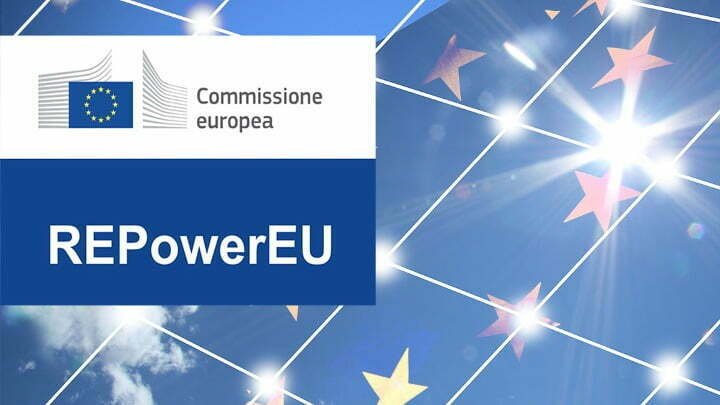
The March 2021 report urged the German government to recognise that the pursuit of alleged “sustainable development” was not only increasing the cost of energy for the poorest German households and small-to-medium-size German businesses but was also endangering the country’s ability to generate the reliable power it needs to function.
In that same report, the president of the Federal Audit Office, Kay Scheller, wrote:
Since our last balance sheet in 2018, too little has happened to successfully shape the energy transition. [. . .] The Federal Court of Auditors sees the danger that the energy transition in this form endangers Germany as a business location and overwhelms the financial capacity of the companies and private households that consume electricity.
Sobering words. But they went unheeded. The result: an energy crisis for most of Germany.
Still, not everyone lost out. German multinational corporations benefited handily. As reported by Clean Energy Wire, an outlet supported by the European renewable energy lobby:
[. . .] the roll-out of renewable energies on a huge scale has had two opposite effects on power prices in Germany. On the one hand, cheap renewable electricity flooded the power market, pushing down wholesale power prices. This mainly benefits large and energy-intensive industrial companies, because many can basically source their electricity at wholesale prices. On the other hand, the capital-intensive deployment of renewables pushed up power prices for everybody else.
The Green Hydrogen Conundrum
One of the German politicians’ “Easter Package” solutions to the very “green” energy insecurity it has created is to step up the use of biomass power plants. This means diverting agricultural food production to primary energy production during a global food crisis.
Scientists at Imperial College London (ICL) have produced the models to assure European Union and UK policy makers that there is plenty of “sustainable biomass potential availability in the European Union.” They suggest that this could be used to fuel the transport sector on a continental scale. (Aside: Keep in mind that ICL includes the MRC Centre for Global Infectious Disease Analysis, which produced the wildly inaccurate predictive model that led to unjustified alarm about COVID-19.)
Biomass is supposedly a “green” primary energy source. But the calculations that this supposition is based upon fail to account for the energy cost of growing the agricultural crops (corn, soybeans, sugar cane, etc.) and of harvesting, transporting and ultimately converting the crops into a usable biofuel. When these energy costs are added, biomass energy has a greater “carbon footprint” than the equivalent fossil fuel.
In order for ICL to make a claim that biomass is a “sustainable energy source,” it has to assume that the energy required to convert biomass to a usable fuel will also be “sustainable” in the form of “renewable hydrogen.” The production of this so-called “green hydrogen” is created by the electrolysis of water, which uses electricity drawn from renewable energy sources, such as solar panels or wind turbines.
In ICL’s computer models, the “renewable” low-carbon hydrogen is used to fuel “advanced bio-fuel thermochemical conversion technologies” to convert the harvested biomass into a biofuel from which to power Europe’s entire transport network.
All of which poses a conundrum.
ICL appears to be suggesting that the electricity generated by wind and solar can produce enough “renewable hydrogen” to manufacture the biofuel that will provide Germany, the UK and the rest of Europe with the fuel needed to power all cars, vans and lorries. Unlike Germany and other EU states, the UK has committed to a fleet of Electric Vehicles (EVs) instead of biofuelled vehicles. Presumably the suggestion is that either the hydrogen or the resultant biofuel will produce electricity for its new EV transport network.
Why not just use the electricity generated by wind and solar to charge EVs directly and avoid starvation (caused by the transfer of crops from food to fuel) as well as the cutting down of trees needlessly?
The reason for these various workarounds is that renewable energy, in the form of solar, hydroelectric or wind energy, cannot possibly meet the UK’s or Germany’s or any other nation’s energy requirements.
As we shall see, EVs are not a viable transport network option. And, despite its reassuring models, ICL’s plan, likewise, almost certainly won’t work.
The Energy Density Problem
The first problem is lack of energy density. Energy density is “the amount of energy that can be stored in a given system, substance, or region of space.” While biofuels, especially biodiesel, are among the most energy-dense forms of supposedly “green” energy sources, they are not as energy dense as fossil fuel alternatives.
The heat required for thermochemical conversion to make biofuels has to come from an energy-dense source. Manufacturing solar panels requires similar energy density, which is why companies like Rystad Energy can’t sustain production using “renewable energy.”
Hydrogen is an energy-dense source, but solar, wind and other forms of “renewable” electricity generation have extremely low energy density. It is doubtful that sufficient “renewable hydrogen” could be produced to provide the energy required for the thermochemical conversion of biofuels on anything like the scale needed.
And yet, at the UN’s recent 27th Conference of Parties (COP27), the deceptively named “green hydrogen,” promoted as a “low-carbon” energy dense fuel source by ICL and others, was a centrepiece of the discussions:
Hydrogen has been identified as the potential energy source for the future, with an increasing focus from all stakeholders on Hydrogen, in particular Green Hydrogen. [. . .] Hydrogen is the most abundant chemical element in the world and is considered as one of the main enablers to achieve the net zero transformation. [. . .] 90 Mt (million metric tonnes) of hydrogen are produced annually, mainly from natural gas. Less than 0.5% of this hydrogen was produced from renewable electricity in 2020.
In order to meet just the current demands for hydrogen, using nothing but “green hydrogen,” there would need to be a two-hundredfold increase in “renewable energy” devoted solely to its production.
On top of that, if “green hydrogen” is going to power the thermochemical processes to produce sufficient biofuels needed for a “reliable” continental transport networks across the globe, the increase in solar, hydro and wind generation that would be necessitated is almost incalculable.
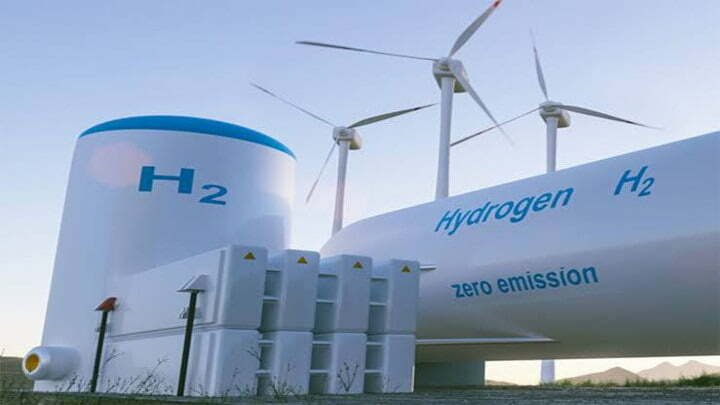
If measured in Watts per square meter (W/sq.m), modern homes in developed nations require—depending on load demand—somewhere in the region of 20 to 100 W/sq.m. By comparison, industrial and manufacturing processes require 300 to 900 W/sq.m.
A high-quality monocrystalline solar panel, operating at approximately 15%–20% efficiency, can generate up to 150 W/sq.m.—but only on a really sunny day. If it’s cloudy or dark, the panels don’t work at all. Yet sunless days and nights, especially in winter, are when most people in Europe need more energy, not less.
Wind power is equally intermittent and unreliable. It can generate up to 250 W/sq.m when it’s windy. Modern wind turbines don’t generate sufficient power from a wind speed below 25mph. But it can’t be too windy. The turbines have a shut-off mechanism that is triggered when the wind reaches 55mph. That constitutes a gale on the Beaufort scale. Wind turbines risk mechanical and structural failure beyond that point.
Broadly speaking, such renewables produce electricity between 10% and 30% of their functional lifespan. This unstable power fluctuation from renewables regularly results in some regions—the State of California, for example— having to shut down solar capacity at peak times. In the case of California, it has to pay other states to disperse its excess energy through their grids in order to avoid overloading its own.
Just as in Germany, these problems with inconsistent power, combined with the investment subsidies, have seen the cost of energy to Californian consumers increase dramatically.
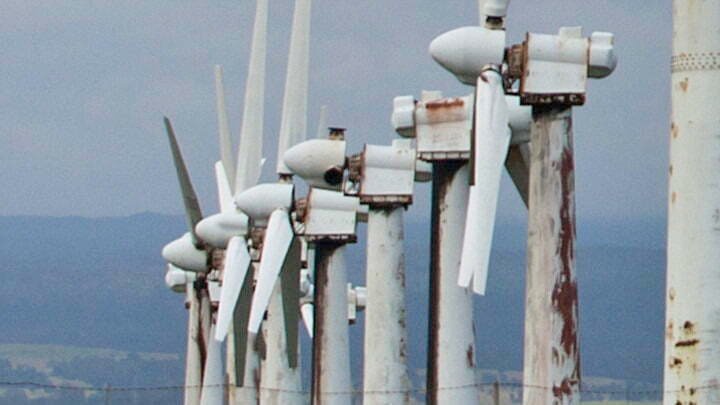
The Energy Storage Problem
The second problem, which arises only when it is sunny or the wind speed is perfect, is how to store any resultant energy surplus.
If, for example, California ever achieves its goal of sourcing 80% of its energy from “renewables,” then at peak times renewables would need to be able to disperse 9.6 million megawatt-hours of surplus energy.
Germany’s “Easter Package” ensures that it will face the same complication during peak hours, but on a much larger scale than in California.
Uncontrollable surges in energy use caused blackouts and the loss of essential air conditioning during the height of the Californian summer in 2020. To manage this kind of peak surge on a global scale would require that the power grids in every nation on earth be completely rebuilt. A high-speed transmission system that has incredible storage capacity and that can somehow mete out this energy when it is actually needed is an unavoidable necessity.
Germany’s wind turbines are located primarily in the windy north, near the Baltic Sea. But Germany’s main industrial region is in the south. To close this geographical gap, the German government proposes initially upgrading the grid with 12,000 additional kilometres of high-speed electric power lines. To put that infrastructure project into perspective, Germany’s current autobahn road network extends to 13,000 kilometres.
But even if the upgrade took place, it still wouldn’t solve Germany’s surge problem. For, just as in California, the German grid cannot cope with the power surges from the wind and solar farms, which, during these surges, are often shut down as a precaution.
Granted, if the surges could be stored in some way, this would be a big step toward addressing the unreliability of renewables. Unfortunately, sufficient storage is impossible with current technology, especially given current lack of available resources. Thus, without a significant increase in nuclear power generation, the proposed world of reliable renewable energy is a ridiculous pipe dream.
Batteries cannot resolve the storage problem. They are exorbitantly costly. And, even though Lithium-ion grid solutions (LIB) can store energy safely for short periods, the fact is, the greater the required storage capacity, the less efficient and more problematic battery storage becomes. So, not only would reliance on battery storage increase consumer prices even further, but it’s unlikely that LIB systems will be physically capable of meeting variable demand on anything approaching the required scale.
The Disposable Waste Problem
The third problem is the disposal of waste from renewables: Much of the waste isn’t actually “renewable.” So-called renewables produce 300 times more waste than a comparable nuclear plant in order to generate the same amount of energy. Moreover, renewables require more than 400 times as much land as nuclear plants do to achieve the equivalent output.
With a 20-to-30-year lifespan, many of the solar panels that were first installed in the early 2000s now need to be destroyed. Dedicated solar panel recycling plants can extract the valuable elements, such as the silver and copper they contain, but most of the material is burned in cement ovens. This is an incredibly energy intensive process. Additional energy will be required to incinerate the estimated 78 million metric tonnes of solar panels by 2050.
Solar panels cannot be safely discarded in landfills, as they contain dangerous levels of lead, cadmium, and other toxic chemicals. In order to avoid the high cost of disposing of them properly, low-performing, second-hand panels are currently shipped off to developing nations where they can provide extremely limited energy for a couple of remaining years, before being discarded into hazardous landfills.

The Insufficient Resources Problem
As if all these problems weren’t insurmountable enough, there is yet a far more significant obstacle to overcome. Namely this: As far as anyone knows, there are nowhere near enough resources on the planet to construct the proposed “sustainable” energy infrastructure.
Germany proposes the hydrogen-driven conversion of biofuels for its future transport and road haulage network. The German government appears to realise there aren’t enough resources to run a German EV fleet, let alone meet all its other “energy transition” demands. Whether charged by “renewable energy” or not, EVs are not a realistic transport option.
By contrast, the UK government, which became the first government in the world to commit to a “net zero” policy on greenhouse gas emissions (GHG) in mid 2019, has announced a ban on the sale of petrol and diesel cars by 2030 and a switch to a 100% EV fleet.
Assessing the feasibility of this policy, Professor Richard Herrington authored a letter to the UK parliamentary Committee on Climate Change (CCC) that outlined the resources necessary to convert just the UK’s existing car and road haulage fleet to EVs.
Herrington’s team of research scientists calculated the rare earth metals and other metals plus the further resources and energy requirements that would have to be secured to implement the UK government’s plan to make all cars and vans EVs by 2050, with all new car and van sales to solely be EVs by 2035:
To replace all UK-based vehicles today with electric vehicles [. . .] would take [. . .] just under two times the total annual world cobalt production, nearly the entire world production of neodymium, three quarters the world’s lithium production and 12% of the world’s copper production. [. . .] [It] will require the UK to annually import the equivalent of the entire annual cobalt needs of European industry. [. . .] If this analysis is extrapolated to the currently projected estimate of two billion cars worldwide [. . .] annual production would have to increase for neodymium and dysprosium by 70%, whilst cobalt output would need to increase at least three and a half times. [. . .] The energy demand for extracting and processing the metals is almost 4 times the total annual UK electrical output. [. . .] There are serious implications for the electrical power generation in the UK needed to recharge these vehicles. Using figures published for current EVs [. . .] this will demand a 20% increase in UK generated electricity.
Herrington’s calculations specifically took no account of the additional energy required to manufacture the solar panels and the wind and hydroelectric turbines that would be needed to generate the necessary additional 20% of total UK energy production simply to charge the UK’s proposed fleet of EVs.
Bear in mind, we have discussed thus far only the resources and the increased electricity generation needed for an EV fleet in the UK. We haven’t even touched upon the impossibility of replacing the world’s current transport and commercial road haulage requirements with EVs, let alone meet future energy demands in every other sector of the global economy.
When US scientists conducted a critical review of global decarbonization scenarios to ascertain the feasibility of achieving SDG7, they looked beyond the transformation of transport and included the total demand for energy needed for every other aspect of our lives. Their conclusion:
[A]ll of the scenarios examined envision historically unprecedented improvements in the energy intensity of the global economy[.] [. . .] Achieving these rates would require a significant and discontinuous acceleration of worldwide energy efficiency efforts. [. . .] To accomplish deep decarbonization with this limited portfolio, [. . .] studies depend on sustaining global energy intensity improvements for decades at a rate twice as fast as the most rapid energy intensity improvement experienced in any single year in recent history and roughly 3.5 times faster than the average global rate sustained from 1970 to 2011. [. . .] Given the multiplicity of feasibility challenges associated with [?] simultaneously achieving such rapid rates of energy intensity improvement and low-carbon capacity deployment, it is likely to be both premature and dangerously risky to ‘bet the planet’ on a narrow portfolio of favored low-carbon energy technologies.
If the planet genuinely commits to this proposed SDG7 energy transformation, the energy intensity and density problem inherent in renewables means that humanity will need to generate more energy, by orders of magnitude, on a global scale.
Absent a massive increase in nuclear power generation, some form of reliable “energy-dense” renewable power technology that is yet to be discovered appears to be absolutely essential.
It is sheer fantasy—if not utter madness—to imagine that the world currently possesses either the technology or the resources to generate the energy it needs from “renewable energy sources.” Yet governments around the world are hell-bent upon implementing this apparently suicidal mission.
The German policy pledge to base 80% of its power generation on renewable energy would seem totally absurd were it not for the EU’s hasty reclassification of what “green energy” means. The EU Parliament has now decided that nuclear power and gas-fired power stations are “green.”
They had no choice but to compromise. Surely they realized that powering a continent like Europe with so-called “renewable energy” is totally unrealistic. It is expensive, environmentally damaging, and unsuited to our power requirements.
Despite these hard facts, the rhetoric must say otherwise, for national governments and intergovernmental bodies never dare tell the truth about what they are really up to. Hence, the EU’s REPowerEU policy announcement falsely claims:
Renewables are the cheapest and cleanest energy available, and can be generated domestically, reducing our need for energy imports. The Commission is proposing to increase the EU’s 2030 target for renewables from the current 40% to 45%. [. . .] The EU Solar Energy Strategy will boost the roll-out of photovoltaic energy [. . .] [a]s part of the REPowerEU plan. [. . .] Replacing coal, oil and gas in industrial processes will help cut the dependency on Russian fossil fuels, while transitioning to cleaner energy sources, strengthening industrial competitiveness and supporting international technology leadership.
This is beyond gibberish. The EU is exploiting the war in Ukraine to sell preposterous energy policies. It is a duplicitous and life-threatening deceit. The risk factors for excess winter mortality in Europe could not be clearer:
Cross country variations in mean winter environmental temperature, [. . .] mean winter relative humidity, [. . . ] rates of income poverty, [. . . ] inequality, [. . .] deprivation [. . .] and rates of fuel poverty [. . .] are found to be significantly related to variations in relative excess winter mortality. [. . .] High seasonal mortality in southern and western Europe could be reduced through improved protection from the cold indoors.
Prior to the sanctions, Germany imported 33% of its oil, 45% percent of its coal and 55% percent of its gas from Russia. While much has been made of Germany’s occasional ability to generate 60% or more of its energy from renewables, that ability is entirely reliant upon load demand and weather conditions. At other times, renewable energy plummets to below 16%. In any event, most of the renewable energy is lost because the grid can’t handle it.

Policy platforms like REPowerEU and Energiewende, combined with the EU’s ongoing sanctions regime, will increase the mortality risk for the poorest and most vulnerable Europeans. Yet no one seems to care about this.
The Duplicitous Global Carbon Market
We are told that the whole point of “sustainable development” is to mitigate the problems that will supposedly be caused by humanity’s GHG emissions. This fairy tale has left most people labouring under the illusion that SDG7 energy transition, and the variations on the associated “net zero” policy commitment, such as the European Union’s REPowerEU and the German government’s Energiewende, will therefore reduce CO2 emissions.
That assumption is wrong.
Target 7.2 of SDG7 commits the world to substantially increase the use of renewable energy in the global “energy mix.” It has two big strikes against it. For one, it ignores the monumental risks involved. For another, it does not say nor even imply that developed nations or multinational energy corporations—the so-called “big polluters”—need to necessarily reduce their GHG emissions.
To understand the subject, we need to return momentarily to Article 12 of the Kyoto Protocol, which was adopted in 1997 and which established three “flexible” international carbon trading and offsetting mechanisms: Emission Trading, the Clean Development Mechanism (CDM) and Joint Implementation (JI).
Emission trading created a new type of tradable commodity, measured in metric tonnes of CO2 removal (or “sequestration”). It effectively established the carbon trading market. According to Investopedia:
Carbon trade is the buying and selling of credits that permit a company or other entity to emit a certain amount of carbon dioxide or other greenhouse gases. The carbon credits and the carbon trade are authorized by governments with the goal of gradually reducing overall carbon emissions and mitigating their contribution to climate change. Carbon trading is also referred to as carbon emissions trading.
If you believe in the climate crisis and the assumed need to reduce global CO2 emissions, this all sounds reasonable. Reasonable, that is, until you discover how this global market operates.
The UN believes, in keeping with its Framework Convention on Climate Change (UNFCCC), that there is no need for developed nations to reduce their carbon emissions to meet SDGs:
These mechanisms [Emission Trading, the CDM & the JI] ideally encourage GHG abatement to start where it is most cost-effective, for example, in the developing world. It does not matter where emissions are reduced, as long as they are removed from the atmosphere. This has the parallel benefits of stimulating green investment in developing countries and including the private sector in this endeavour to cut and hold steady GHG emissions at a safe level. It also makes leap-frogging—that is, the possibility of skipping the use of older, dirtier technology for newer, cleaner infrastructure and systems, with obvious longer-term benefits—more economical.
In 2018, Carbon Market Watch (CMW) released a report which highlighted what “sustainable development” meant for people living in developing nations as they leapfrogged over a safe and reliable energy supply:
In Uganda, a private company blocked access to land vital for the livelihoods of local communities in order to claim credits for planting forests in that area. In India, a waste incinerator project diverted waste from landfills, where it would get sorted by local informal workers, and burned them in a facility located close to villages. In Chile and Guatemala, hydroelectricity projects exacerbated land right conflicts, destroyed social cohesion within villages, and damaged ecosystems and biodiversity.
Three years later, CMW’s 2021 report noted that large-scale corporate forestry conservation projects in Colombia were routinely overestimating the carbon sequestration value by millions of tonnes of GHG sequestration, generating over 20 million dodgy carbon credits. These credits were then traded on the carbon market.
Currently, the carbon trading market value stands at around $2 billion annually, but it is set to grow rapidly, approaching a compound annual growth rate (CAGR) of 30%—very attractive to globalist investors.
The underlying problem of carbon market corruption, which hasn’t yet been tackled, was highlighted in 2019 when the Financial Times reported what the carbon market meant in terms of genuinely—or, rather, not genuinely—reducing global GHG emissions:
It is much easier to buy the credit than verify the reduction. [. . .] [P]rojects may not represent a net gain to the environment. A 2016 study found that 73 per cent of carbon credits provided little or no environmental gain. [. . .] That figure rose to 85 per cent of projects under the UN’s Clean Development Mechanism [CDM].
The CDM allows governments and corporations to “offset” their own emissions by investing in projects they designate as “green,” such as nuclear, gas or even coal-fired power stations, for which they can receive the necessary “carbon credits.”
Example #1: The Indian energy giant Reliance registered its “high-efficiency” coal-fired power station in the port town of Krishnapatnam, located in the state of Andhra Pradesh, under the CDM mechanism. The UN sanctioned the registration and awarded Reliance $165 million in carbon credits.
Example #2: The French energy giant TotalEnergies has reportedly barred 400 Congolese farmers and their families from accessing their own land so that TotalEnergies can claim carbon credits for planting trees on the Bateke Plateau. This will allow TotalEnergies to “offset,” without actually reducing, its CO2 emissions by the equivalent amount.
The lives of the Congolese farmers and their families are seemingly irrelevant. One of the affected farmers, Clarisse Louba Parfaite, said that, from the farmer’s perspective, the objective appeared to be “to kill us, to send us back to being slaves again like in the past.”
One conclusion we can glean from these two examples is that there is a plan afoot to exploit “sustainability” in order to thwart economic development in the Global South and that this plan is a core element of SDG7.
It is outlined in SDG7’s Target 7.b, which describes the UN’s objective of expanding the technological infrastructure to supply “sustainable energy services for all in developing countries.”
This expanded infrastructure, in turn, enables developed nations and global corporations to leverage debt and investment for the purpose of controlling access to developing nations’ resources and keeping their populations in penury.
Profiteering From Manufactured Scarcity
At COP27 last November, former Secretary of State and current US “special presidential envoy on climate” John Kerry extolled the virtues of the Energy Transition Accelerator (ETA). This is a global public-private partnership (G3P) between the US State Department, the Rockefeller Foundation and the Bezos Earth Fund.
The ETA is part of a $4.2 trillion capital investment initiative that exploits the aforementioned Target 7.b of SDG7, which specifies the Global South as the pilot region for the worldwide transformation of energy markets.
In his remarks, Kerry said:
This initiative, the Energy Transition Accelerator, will capitalise private capital to accelerate the energy transition in developing countries, supporting the rapid deployment of renewables and delivering deeper and earlier emission reductions. [. . .] Our intention is to put the Carbon Market to work to deploy capital to speed the transition from dirty to clean power, specifically for two purposes — to retire unabated coal fired power stations and accelerate renewables.
While developed nations have benefited from the reliable energy that has enabled their industrial revolutions, poorer nations will not have that privilege. Instead, through G3P initiatives like the ETA and global investment strategies like the Glasgow Financial Alliance for Net Zero (GFANZ), they will be forced to accept practically useless renewables.
Not surprisingly, under this SDG target, the Global South nations are horribly and helplessly exposed to financial and economic abuse. It is no coincidence that the drive towards SDG7 has suddenly created “scarcity” in a number of international commodity markets, especially cobalt, lithium, copper and, of course, oil. Oil is essential to manufacture the vast amount of plastics renewable energy necessitates.
This engineered “scarcity” in turn amplifies the opportunity for skulduggery. That is, the G3P has set out to make larger profits from those markets. Of course, lower production doesn’t equate to lower revenues for them but, rather, to “sustainable” revenues over the long term.
For example, the Bezos Earth Fund’s capital investment in the ETA is a shrewd move by Jeff Bezos. He and partners Michael Bloomberg, Ray Dalio and Bill Gates are also investing in global mining operations that will provide the nickel, copper, cobalt and platinum required for the ETA “renewable energy” transition in developing nations.
“Sustainable development” initiatives like the ETA will create practically limitless demand for these commodities. As that demand inevitably outstrips supply, these metals will become increasingly “scarce.” And Jeff Bezos’ public-private partnership profits will soar.
Gates, Dalio and Bezos have also teamed up with other multibillionaire “philanthropists,” such as Chinese tech entrepreneur Jack Ma and UK business magnate Richard Branson, to form Breakthrough Energy Ventures (BEV), which will invest in the scarcity they are manufacturing. BEV says its aim is to “eliminate greenhouse gas emissions in the global economy.” We need to be careful not to confuse this verbiage and the investors’ intent with true environmentalism.
One of BEV’s start-up investments is in KoBold metals, a Californian exploration firm that uses AI and machine learning to identify global battery metal deposits. Through KoBold, Gates, Bezos and Ma et al. have invested $150M in the Zambian copper mining Mingomba project.
Now is a good time to invest, because the demand created by trying to achieve the impossible renewable energy transition has made large-scale mining for resources like copper increasingly profitable, and therefore viable.
There are enormous environmental risks associated with copper mining. It generates sulphuric acid and other toxic chemicals that can contaminate water sources. The metal particulates it sends into the atmosphere increase the risk of heart and lung damage. The extensive air pollution caused by large-scale copper mines can result in acid rain or render the air around the mines unbreathable. The dumped waste rock contains sulfide minerals that can degrade and leave toxic deposits across the landscape. This is why the land around copper mines is uninhabitable and stays that way long after the mine itself has ceased operation.
Multinational mining corporations are producing huge profits from copper mining in Zambia. The estimated 90,000 jobs created there is an economic benefit to Zambians. But the environmental and health costs have been marked.
It is estimated that the world will need to produce up to an additional 10 million metric tonnes of copper by 2030 to meet the SDG7 transition to renewable energy. While this creation of new and reinvigorated markets will benefit investors and multinational mining corporations, it is also guaranteed that the environmental damage and community losses will be immense.
Carbon Pricing: A Bizarre Economic Model
As previously discussed, once the costs of resource acquisition, manufacturing and energy are accounted for, renewable energy is considerably more expensive, both environmentally and economically, than the equivalent fossil fuel or nuclear alternatives.
The alleged solution from private capital interests and so-called philanthropic foundations is not to invest in the technological and scientific research that could potentially make renewables feasible, but rather to make fossil fuels so expensive that renewables begin to look attractive by comparison.
Despite the nonsensical claims of governments—such as the UK government referring to renewable energy as “low-cost”—most people can grasp that it is actually more expensive than traditional sources of energy. Breakthrough Energy Catalyst (BEC) calls this additional cost the “Green Premium,” which it defines as:
[. . .] the additional cost of choosing a clean technology over one that emits more greenhouse gases. Right now, clean solutions are usually more expensive than high-emissions ones.
BEC, funded by the Gates and Bezos-backed BEV, perhaps unsurprisingly maintains that renewable energy costs more than “high-emission” solutions, not because of the monumental level of resources required to produce it but rather because fossil fuels are priced incorrectly. BEC asserts that’s because the pricing of fossil fuels “doesn’t reflect the true cost of emissions.”
Investors like Gates and his partners are proposing a new form of economics, unlike any we’ve seen before. Using questionable scientific models and making predictions that have invariably been proven wrong, they suggest artificially inflating the price of anything and everything they arbitrarily decide is not “green.”
Gates informs his government partners how they can assist in this effort:
Governments can use policies to either make the carbon-based version of something more expensive, or make the clean version cheaper—or, ideally, some of both.
But governments can’t make anything cheaper. That is not how basic economic supply and demand works, as Gates well knows. The scarcity of the metals needed for renewable energy generation and storage will inevitably push up, not lower, the price of copper, lithium and cobalt and other natural resources. Governments could provide subsidies, but that would not be a savings, rather an additional cost to be borne by the taxpayer.
The more likely course governments will take is the one they are in fact planning—and that is to tax fossil fuel production, thereby making it more expensive. The Organisation for Economic Co-operation and Development (OECD) describes this carbon tax as:
[. . . ] an instrument of environmental cost internalisation. It is an excise tax on the producers of raw fossil fuels based on the relative carbon content of those fuels.
The EU has decided to get the ball rolling with its carbon-based border tax. The EU will impose a levy upon imported electricity and commodities, such as iron, steel, cement, fertilisers and aluminium, that it thinks are produced using too much CO2. The way this EU pricing mechanism is proposed to work reveals the underlying duplicity of the carbon markets.
Importers will still be able to import, for instance, the steel and aluminium they need. But, in addition, they will have to buy corresponding carbon removal certificates. While this increases the cost of doing business, it doesn’t actually reduce carbon emissions. The idea is that it will do the latter over time, as those seeking to sell their goods and services to the EU will supposedly have to decarbonise their industry to compete.
But this isn’t true. Gates admitted as much when he said, “Right now, clean solutions are usually more expensive than high-emissions ones.”
Specifically, switching to renewables will “increase electricity costs by 15%,” BEC notes. In other words, the fact that EU imports will have an effective carbon tax slapped on them doesn’t necessarily make renewable energy a cheaper option. Indeed, as pursuit of SDG7 creates global scarcity, the cost of renewable energy, which is already greater than that of fossil fuels, is set to rise even higher.
Furthermore, there is nothing to stop exporters from buying carbon removal certificates themselves to sweeten the deal for their EU customers. And, as we have seen, importers like TotalEnergies can “acquire” the necessary carbon removal certificates by displacing Congolese farming communities. The “earned” certificates can also be traded in the newly created carbon markets, thus producing additional revenue streams.
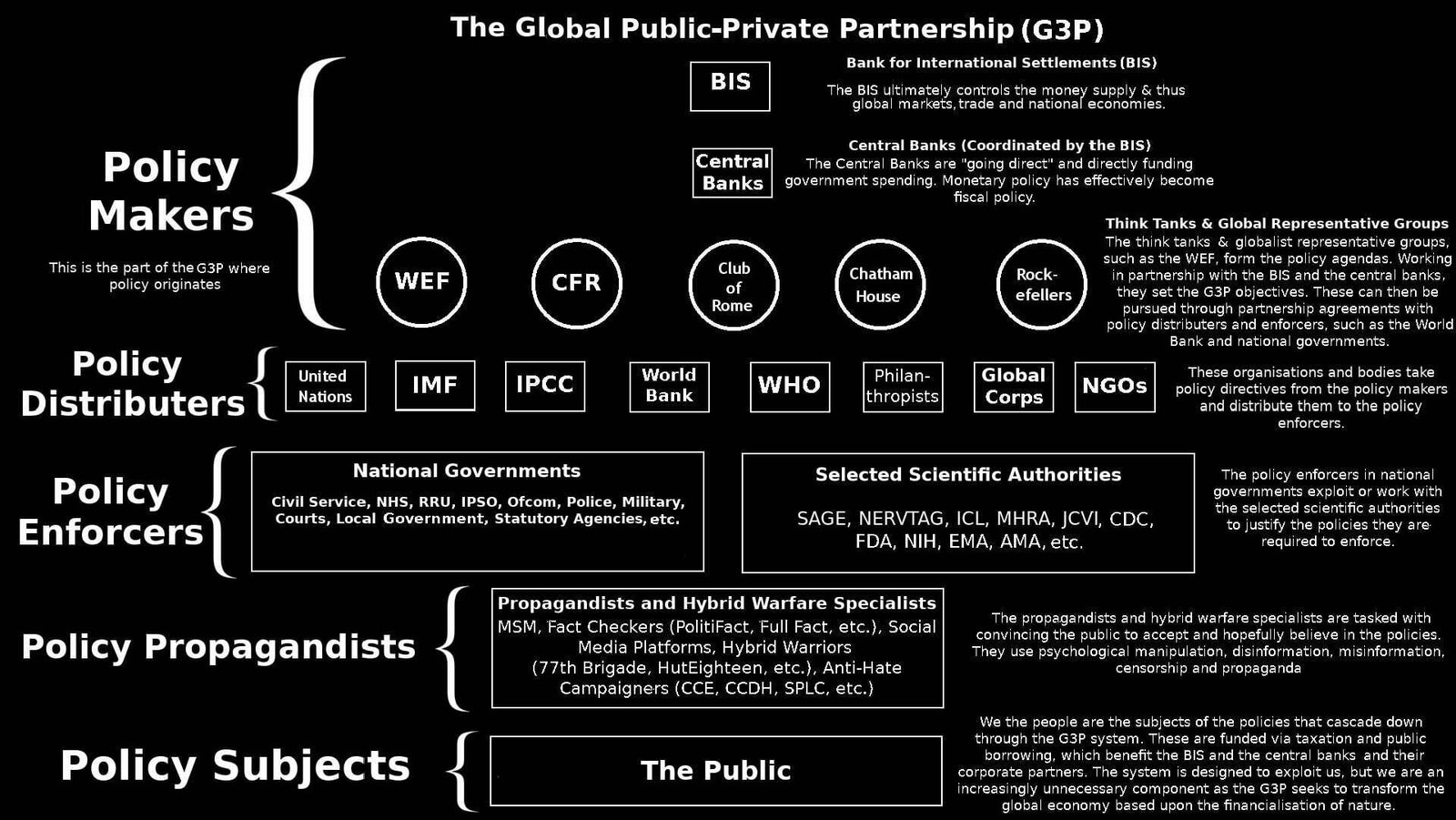
The Carbon Offset Charade
The “carbon market” Kerry exalted will also allow “the big polluters” to further offset their alleged pollution by purchasing carbon credits. This mechanism allows governments in developed nations, working with their stakeholder partners, to claim they are moving toward “net zero” without reducing their CO2 emissions.
Germany, for instance, earned 400,000 ERUs (Emission Reduction Units) for investing in the construction of a French biomass power plant in the Marne Valley. The ERUs “offset” Germany’s own emissions, enabling the government to claim it had lowered domestic CO2 without actually reducing it. That’s how the “sustainable” Energiewende works.
Meanwhile, the UK government, with its commitment to “Net Zero,” has used UK taxpayers’ money to subsidise Drax Group Ltd.’s conversion of Selby Power Station to burn wood pellets instead of coal. Drax claims that “the use of biomass pellets reduces our carbon emissions by 80% compared to coal.” This isn’t true, though some creative “climate science” makes it appear true.
Wood pellets are less energy-dense than coal. A lot more wood pellets than coal must be burned to produce the same amount of energy. Wood is biomass but so is coal, just in a more energy dense form. Yet we are told the CO2 emissions from burning wood are somehow better. In fact, burning wood for electricity generation emits more CO2 per kWh than coal.
The UN’s definition of renewable energy is . . . “energy derived from natural sources that are replenished at a higher rate than they are consumed.” If so, Drax’s assertion that its emissions are “80%” less than a comparable coal-fired power station is extremely dubious
Essentially, Drax claims that, as it grows, the tree consumes the CO2 it then emits once Drax has cut it down and burned it. More trees can be planted that subsequently consume (sequester) the emissions and, therefore, burning trees is supposedly “carbon neutral.” But pointing to this life cycle assumes that trees grow as fast as they are felled and burned, which is of course not true.
In reality, if wood pellet biomass really were “carbon neutral,” then the total global forested landmass should be growing. But that landmass is, in fact, being reduced. Burning wood pellets simply emits more CO2 than burning coal. There is no corresponding global sequestration trade-off.
Annex IV of the EU Emissions Trading System (EU ETS) Principles for monitoring and reporting states without justification:
IPCC [the Intergovernmental Panel on Climate Change] default values are acceptable for refinery products. The emission factor for biomass shall be zero.
In January 2021, the European Academies Science Advisory Council (EASAC) considered the biomass claims made by Drax, the IPCC the EU ETS and others, and reported:
[A] ‘renewable’ energy that actually increases atmospheric CO2 for decades merely contributes to overshooting the 1.5˚C–2˚C targets. Such technology is not effective in mitigating climate change and may even increase the risk of dangerous climate change.
There is no evident rationale for the claim that CO2 emissions from burning wood pellet biomass should be zero. The IPCC and the EU ETS hierarchy simply decree they are. And because they say so, Drax and the UK government can designate their wood-fired power station as “green.”
The pellets for Drax’s Selby plant are shipped across the Atlantic Ocean, in the immense volume required, in huge diesel-powered tankers from North America. None of the energy costs of the forestry, logging operations, processing and transport of the produced wood pellets are factored into either the IPCC’s or the EU ETS’ “calculations.”
But that is no impediment for Drax, which has signed the largest carbon credit deal in history. The International Centre for Carbon for Sustainable Carbon reported:
The five-year deal will see Drax supply Respira with as many as 400,000 tons worth of certificates per year, backing them with CO2 removal from its planned bioenergy and carbon capture and storage (BECCS) plants in North America. The certificates will then be sold as credits on Respira’s platform to businesses and institutions looking to offset their emissions and reach their climate goals.
Drax will earn these carbon credit “certificates” by emitting more CO2 from wood pellets than it would if it were burning coal. Companies like Cemex, the US concrete manufacturing giant; Alphabet (Google’s parent company) with offices and energy networks spread across the globe; the car manufacturer General Motors; and the oil giant Shell can then buy the Drax credits, thus reducing their “carbon footprint” and also claiming they are “green.”
This arrangement will help Cemex et al. export their goods and services into the EU market. They can exchange their purchased carbon credits for the necessary carbon removal certificates. Both the EU and these global corporations can claim they have reduced their carbon footprint without actually reducing their CO2 emissions at all.
None of this blatant duplicity undermines the UK government’s enthusiasm for its “net zero” policy. Following its post pseudopandemic pledge to “build back greener,” the UK government’s Net Zero Strategy epitomised the SDG7 deceit:
Technological changes mean that biomass usage can now go beyond carbon-neutral and deliver negative emissions by combining it with carbon capture and storage (BECCS). [. . .] It is possible that sustainable biomass can not only enable production of low carbon fuels but could also deliver vital negative emissions.
Keep in mind, though: “Negative emissions” are achieved by “offsetting” more emissions than are produced, not by reducing emissions. Anyone who dares question this “sustainable development” model is castigated as a climate or science “denier.” Climate change is the new global religion. Doubting what we are told about it—and ordered to believe about it—is heresy.
Meanwhile, climate alarmist celebrities fly around the world in their private jets, lecturing us on how we need to reduce our carbon footprints because, unlike displaced Congolese farmers, they have the wealth to “offset” them by planting some trees.
The alarmists’ delusional, empty rhetoric completely ignores the immense danger to humanity that sustainable development and the mindless pursuit of SDG7 represents.
Could it be that, for all their virtue signalling, they haven’t a clue as to the havoc that sustainable development is wreaking on all life?






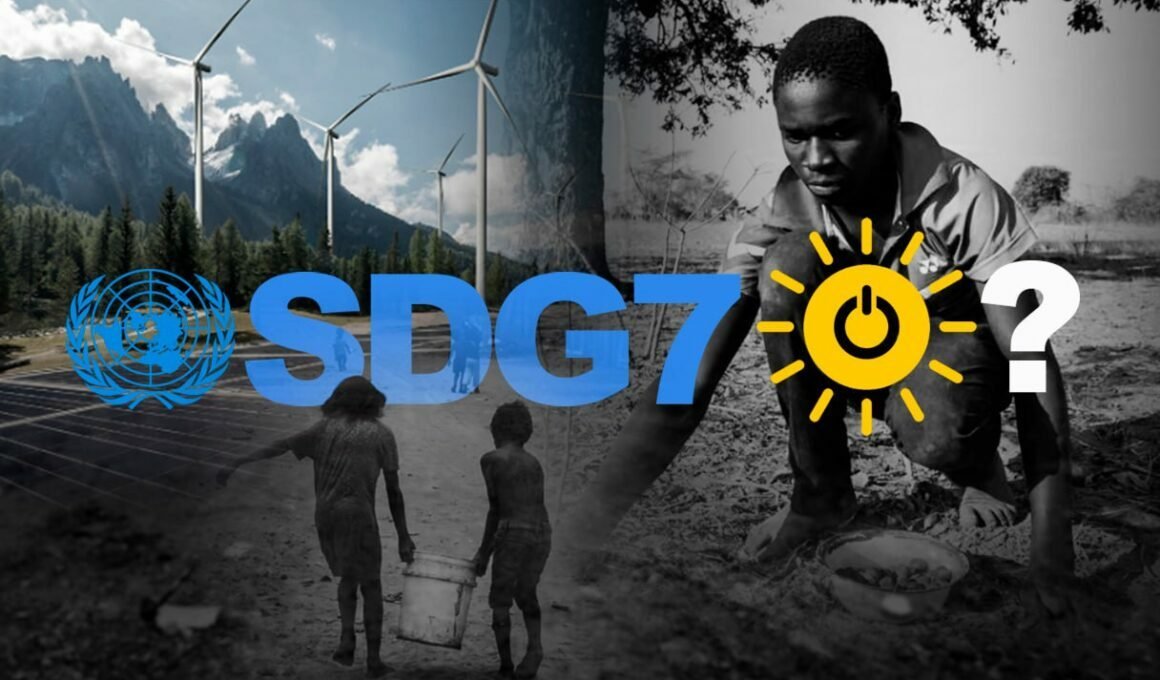
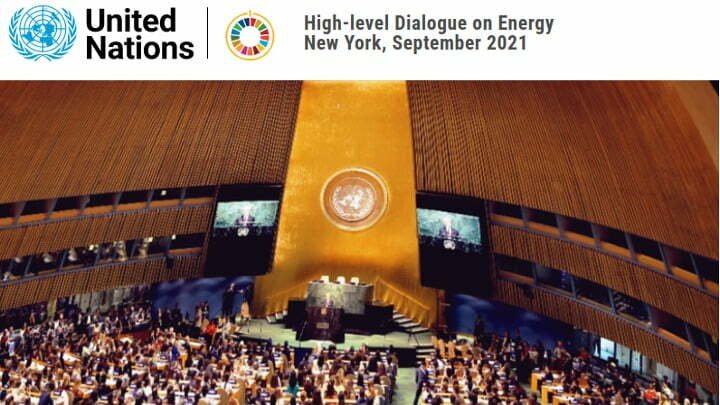

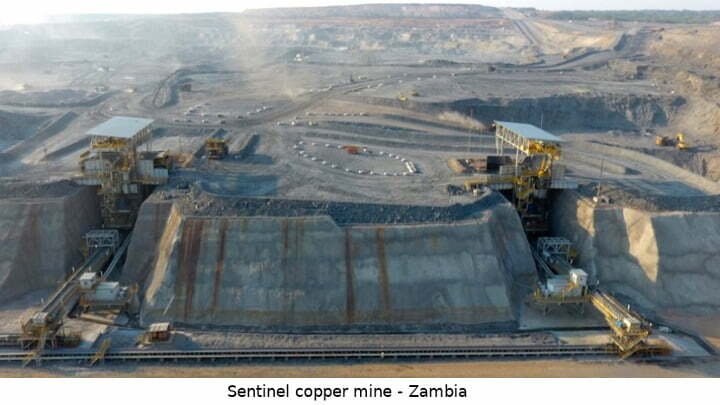




Grid reliability is already taking a hit in the US as well. Duke Energy rolled blackouts for the first time in its history on Christmas Eve. Renewable energy cannot supply winter superpeaks. Consumers better get used to less reliable power when they need it most. Consumers will pay more and receive less. But yeah, Go Green they said.
“the EU’s political class was prepared to take an enormous risk with the lives of every European citizen in order to oppose Russia’s military intervention in Ukraine.” So is the United States and many G7 countries. Everything IS a Rich Man’s Trick. In the US the top 1% are in bed with the Mob, own the CIA, the military, the justice system and the government. We have no recourse but to educate and revolt. There’s no other way to fight such power and greed, for they will always try to keep it even if they have to collapse three buildings in NYC, killing 346 first responders and others of their own just so they can blame middle easterners and use it as an excuse for war. They are ruthless and diabolical. They have murdered many who might have spoken. But if we are not fearless against such evil, we will be defeated. See Calling Out Bravo 7, a documentary by NYC firefighters at ground zero, and its sequel, Beyond Bravo 7. Also see Everything Is a Rich Man’s Trick. May the force be for the good of us who they consider their pawns in this war of classes.
Great comment
Good article thanks Iain. You might also have mentioned the enormous amount of power that data centres will require to fulfil the data gathering goals of the Mad Resetters, plus the additional energy needs of the universal digital currency system. One has to assume the tyrants have taken these basics into consideration. Do they have a stunning new secret method if energy production up their sleeves?
I agree with your comment, the word “diabolical” being especially pertinent.
Thanks for an excellent article.
Soon the mighty and important people of the world will meet their peers in Davos.
What is said, what is done and what is agreed upon, we, the voters and taxpayers are not allowed to know.
Will it be a forum for discussions or will it be a dealing out of orders?
Who knows, certainly not us the taxpayers and voters.
Essential reading! Thank Iaian
I think that the only way out of this is to invent a vaccine to immunize against shared delusions such as beliefs that NFTs actually have any value, or that all the notable movements just organically develop and, then, great minds rush in to find the solutions to save mankind from the (insert calamity) impending danger.
Quite frankly, the problem of energy poverty and climate change could be solved in one easy stroke – KILL THE POOR. Actually, I’m sure that the UN and the Global Private Partners are well on their way to solving it if their policies are anything to go by.
I am not inclined to belittle the problems of renewable energy, nor to dismiss their potential if part of a truly ecological vision and environmentally sound policies. I agree that there is great dishonesty in the politics of these issues. But something enormous is being overlooked in this article. Its enormity is manifest in species loss, flooding, fires, glacial disappearance, drying rivers, extreme heat, melting permafrost, oceanic devastation, food shortages, resource wars, global militarism, and all these things are increasing as CO2 is released. Fossil Fuels based civilization is unsustainable and nuclear power will only be viable with international peace and intense oversight.
You suggest that the next step toward a better future is local power stations, which would decentralize power distribution both socially, economically and politically. I have liked this idea for years, but what will be the fuels? You say nothing and are even more vague about solutions than the disgusting WEF pretense of concern for the earth. What I find is that there is virtually no honest debate about these issues because nobody has a defensible solution that does not involve a scaling back of lifestyle expectations and a radical revisioning of how humans might live in harmony with natural processes. No one, including you , wants to face independent thinkers and critics who care more about actual solutions than they do about building an audience who shares the same set of fears and questionable omissions of thorny questions.
I am happy to face you and debate the issue. Why do you think I wouldn’t be? I think renewable energy could be beneficial on a decentralised (micro-power plant) basis. I believe that is what I said in the article. It wouldn’t be as good as nuclear or fossil fuel micro power but it would at least provide some power to those who currently have none.
I recognise the many environmental problems we face and accept “species loss, flooding, fires, glacial disappearance, drying rivers, extreme heat, melting permafrost, oceanic devastation, food shortages, resource wars, global militarism, and all these things” are concerns (although some are questionable and less pressing concerns than others) but I do not accept that they are caused by the release of CO2.
So by all means we can debate these issues but we first need to agree perhaps on the nature of the problem. For me it is a corrupt global Kakistocracy, not human beings industrial development. But I also accept that human beings are causing environmental problems, just not through the release of so-called GHGs specifically.
Excellent response. The solution that no one will address, is that energy USAGE is the problem. Ya know? First and Second Laws of thermodynamics. You can’t produce or utilize energy without causing a thermodynamic response…
The only resolvable solutions involve reducing energy USAGE by about 90%. Ya. 90%. Banning ALL forms of military adventure, would put a huge dent in thermodynamic expenditure and mass environmental destruction. That’s why it will not happen…
The mainstream media would have believe there are more wild fires than ever (there are less), our house is burning (we have a serious global problem with cold temperatures), CO2 is a problem (it is absolutely essential for life and any less and we will be in real trouble), arctic sea ice melting (it is doing just fine), Greenland ice sheet is melting (it is not and has made extraordinary ice sheet gains this summer … and on it goes. Most of our problems have been engineered – mass migration, food shortages, war, price rises, energy crisis. Important things are being hidden from us – firmament, God, technology, land, resources. We all need to be thinking critically now. We can’t believe anything we see on the mainstream media and therefore need to move away from that fearmongering narrative, find out what is really going on and move on from there. There is overwhelming evidence we are being socially engineered, brainwashed and outright lied to. Everything that is being rolled out now has been planned for decades or longer. I suspect renewable energy is simply one way to relieve the masses of money and land. We are seeing high energy prices and a huge loss of land to energy companies for wind farm development and solar farms. Renewable energy is clearly not sustainable and won’t do anything for so-called climate change. Repowering on wind farms is currently going on in Scotland where old turbines at the end of their lives are taken down and new larger ones put up. New turbines need new bases on virgin land. They can’t be put in the same place as old smaller turbines. Old bases are left in the ground and never removed. New turbines all need new roads going to them. They all need blade laydown areas, crane pads and new cabling (involving deep ditches). The environmental devastation is so shocking is beggars belief. 16 million trees have been felled on Scottish Govt land (doesn’t include private land) for wind farms to date. Some replanting goes on but not enough. No-one monitors compliance. it’s a big fat con. What’s the answer to our energy problems then? Whatever it is, we won’t be told about it nor will we be using it because it is not in the interest of Big Energy, Big Tech or Big Govt. They will be sucking us dry for as long as we let them, encouraging us to vote Left or vote Right to change things but things never change because they are all singing from the same climate change, warmongering, pro-vax, etc songsheet. The power of God is probably ultimately going to save us, if anything will, but things are going to get a whole lot worse before that happens.
Great research and thus a very informative article Iain; in my view these “Green Cultists” have already factored in that none of what they propose is in any way achievable at any future point in time with the current population level on Earth. In fact, that is the whole point, because they are “Malthusians” who already believe that the planet is “over-populated”. In addition everything they attempt to do always seems to worsen the global populations ability to thrive, grow and prosper whilst always claiming the opposite using plausible deniability.
Once upon a time, the folk at the top of the pyramid, needed workers to provide for the workers, who were providing the goods and services that the first lot of workers needed in order to exist and so on up the supply chain until it got to the workers who were immediately beneath the top level. Now with robotics, 3-D Printing, Artificial Intelligence, Automation and Advanced Manufacturing processes etc., the number of levels in the pyramid is reduced and the ‘Earth Support and Management structure’ is flattened. The majority of workers will no longer be required to the same extent, and are seen as a net cost in terms of energy, food, and used resources; ‘they’ want these resources for themselves and ensure that their future descendants have access to the same in the future; so the energy situation is just another part of the 4th and 5th Generational Warfare we are increasingly experiencing. These people who make these decisions are not stupid – I tend to think that Hanlon got it wrong when he said “”never attribute to malice that which is adequately explained by stupidity” – if all it was was incompetence or stupidity they would at least err in our favour from time to time – it seems they never do – therefore it must be intentional.
The whole purpose above in connect to your statement ‘The alarmists’ delusional, empty rhetoric completely ignores the immense danger to humanity that sustainable development and the mindless pursuit of SDG7 represents.’ so they are not delusion to their death as you say immense danger to humanity but more likely as a monitor to humanity so they are god to know all and as a barrier to negative like rebel and other, so the whole point to convert into a monitor system with carbon credit or lead to gain the process of monitor like digital wallet, then will give out money, so only when we are under them completely as rebel is impossible but not before.
I see no mention of the use of hemp as an energy source. Far less energy would be needed if it weren’t for the extravagant lifestyles of the super wealthy elites and celebrities. Smaller countries also need much less energy production than large countries even with increased development requiring more energy than they currently use.
CO2 is not a pollutant and therefore should not be considered when making energy policies. Real pollutants such as heavy metals, radiation and “forever chemicals” and their impact on environmental, human and animal health are what should be considered when making energy policies.